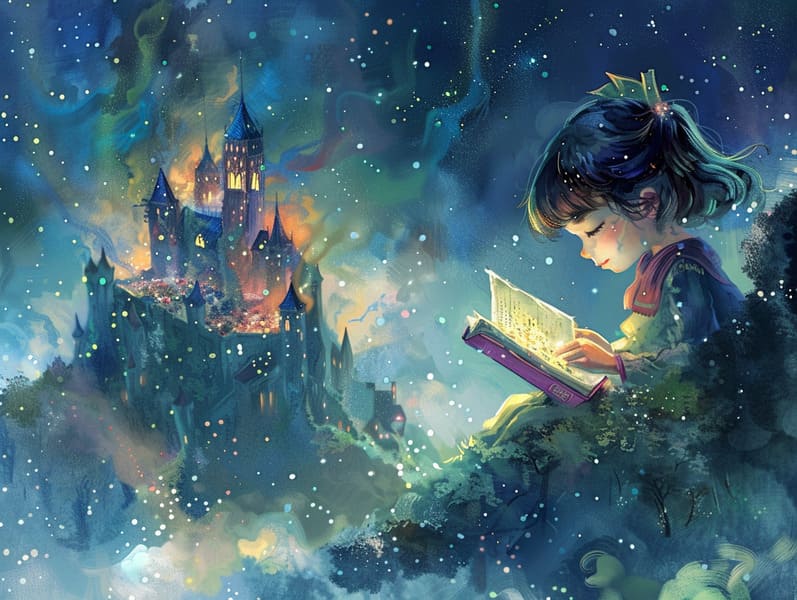A Brief History of Fairy Tales to Read with Their Unending Grace.
A Brief History of Fairy Tales to Read with Their Unending Grace.
Blog Article

Children's fairy tales have timeless appeal. These tales have been recounted from one generation to the next millennia before they were ever inscribed. They came from a variety of cultures, including Eastern traditions. They were initially passed along among grown-ups, often carrying themes and messages concerning the societal norms and beliefs of the time.
The renowned Brothers Grimm, Jacob and Wilhelm, were among the first to collect many of these beloved stories. Their volume, "Grimm's Fairy Tales," included stories like "The True Bride," "Little Brother and Little Sister," and "The True Story of Snow White," which have since become cornerstones in the world of traditional fairy tales. Similarly, Hans Andersen's delightful tales, such as "The Sea Maid," and "The Duckling that Could," have enchanted hearts worldwide, ensuring their place in the pantheon of beloved fairy tales.
Though they are centuries old, fairy tales remain as meaningful as ever, especially as children's night stories. These fantastical tales are now available in numerous formats, including artistically illustrated books, whimsical animations, and online storybooks.
Their persistent charm can be ascribed to several whimsical characteristics:
Crucial Morals: Ancient fairy tales often share important moral lessons. Narratives like "The Story of the Boy Who Cried Wolf" teach the virtue of truthfulness, while "The Tale of the Tortoise and the Hare" emphasize the merits of persistence and modesty. These tales offer the young clear distinctions between good and bad, forming their moral compass in a mild yet significant way.
Warmth and Understanding: Classic fairy tales frequently present individuals facing tests and troubles, encouraging listeners to feel with their struggles and back their triumphs. For instance, "Beauty's Beast" reveals the importance of seeing beyond the surface to recognize the inner being of a character, fostering empathy and discernment.
Cultural Understanding: Many ancient fairy tales are interwoven with the cultural contexts from which they bloomed. Learning from these stories can provide informative snapshots into different customs, nurturing a sense of global appreciation and discernment.
Inventiveness and Imagination: The fantasy-filled elements in old fairy tales—enchanted objects—spark children’s visions. These narratives transport readers to magical realms, fostering imaginative dreams and a sense of astonishment that remains a lifetime.
Timeless fairy tales are not only whimsical but also educational. They serve as enchanted tools in building various cognitive and emotional skills in the young. When fairy tales are spoken, they boost verbal skills by showing new terms and meanings and elaborate sentence structures. This practice also develops listening skills and attention, as little ones pay close attention, eager to see what happens next.
Furthermore, deliberating the themes and characters of fairy tales can develop evaluative skills and logical thinking. Children are educated to spot patterns, forecast, and grasp cause and effect. These reflections also facilitate the young verbalize their thoughts and feelings, contributing to their emotional intelligence.
In today’s cyber age, the availability of web-based fairy tales has made these fairy tales more attainable than ever. Internet resources and online apps supply vast collections of popular fairy tales that can be experienced or listened to anytime, anywhere. Fairy tales read aloud are particularly well-received, making available an immersive method for young readers to enjoy these charming stories. Voice books and narrated videos lead characters and settings to life, often supported by enchanting soundtracks and songs that raise the narrative journey.
The lasting appeal of traditional fairy tales lies in their fairy tales ability to evolve to the present while keeping hold of their central values. Contemporary takes of these stories often introduce more inclusive protagonists and modern settings, making them pertinent to today’s audience. However, the key lessons of spirit, benevolence, and truth remain unchanged, continuing to strike a chord with children of all ages.
Fairy tales also offer a sense of ease and knownness. They confer upon a neat narrative with a clear beginning, middle, and end, often winding up with the culmination of conflicts and the triumph of virtue over wickedness. This certainty can be solacing for the young, providing a sense of constancy in an ever-changing world.
Ancient fairy tales continue to enchant and train new generations, maintaining their spell and pertinence in modern society. As bedtime stories for kids, they render accessible a perfect blend of charm and enlightenment, facilitating moral values, empathy, and creativity. The prevalence of web-based fairy tales and the commonness of fairy tales voiced affirm that these old tales remain acquirable to new generations.
By perpetuating and communicating these tales, we continue to value the rich tapestry of inventiveness and cultural heritage. Whether you are delving into a vividly illustrated book, perusing a virtual collection, or hearing an spoken story, the majesty of Grimm's fairy tales is always within reach. These stories teach us of the perpetual effect of stories and its ability to unite us across centuries and lands.
Whether you are reading a artistically illustrated book, delving into a internet collection, or listening via an read-aloud story, the splendor of bedtime fairy tales is always within reach.
These fairy tales teach us of the timeless effect of storytelling and its ability to tie us across generations and cultures, forming a connection that fascinates and enlightens alike.